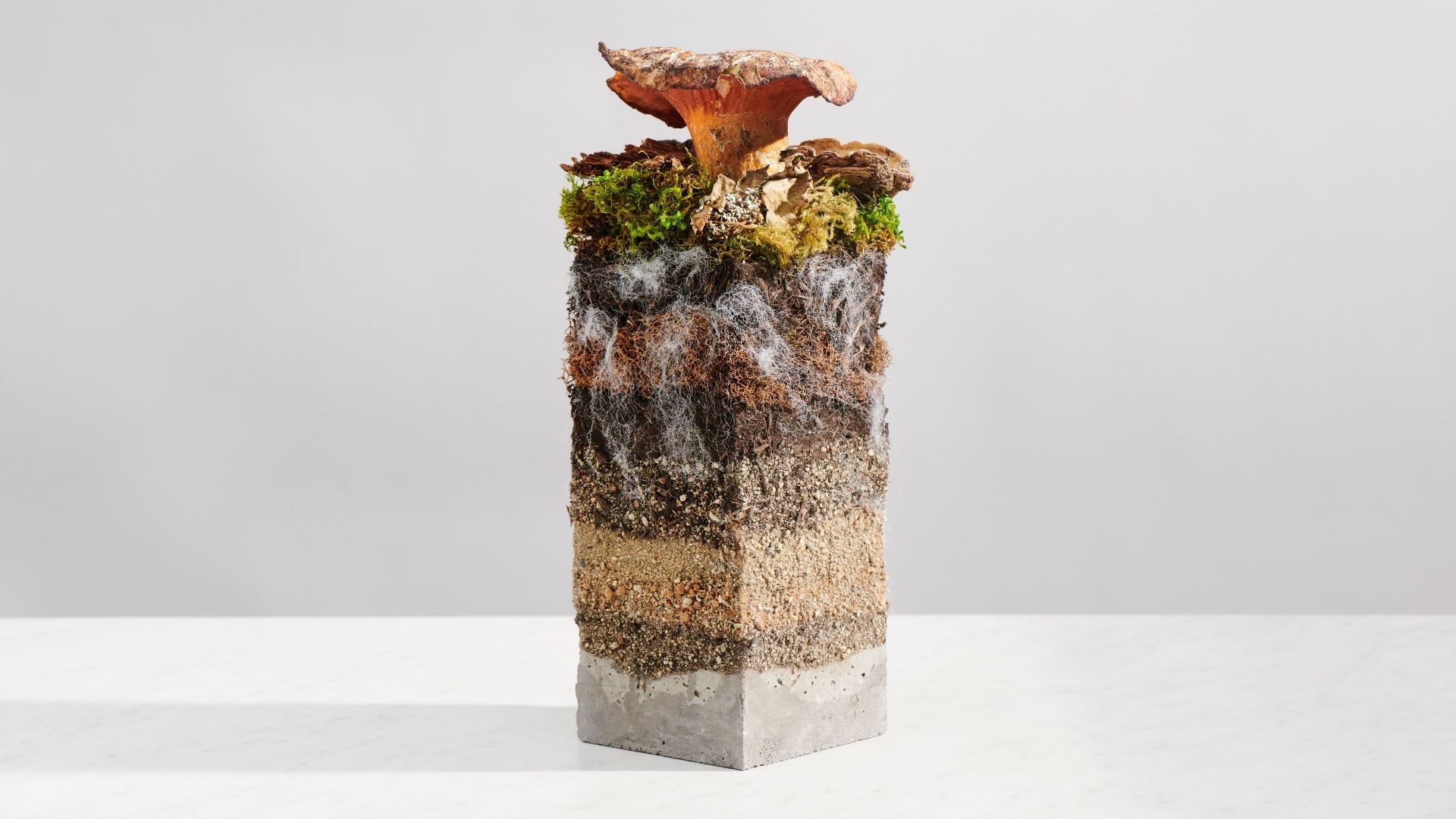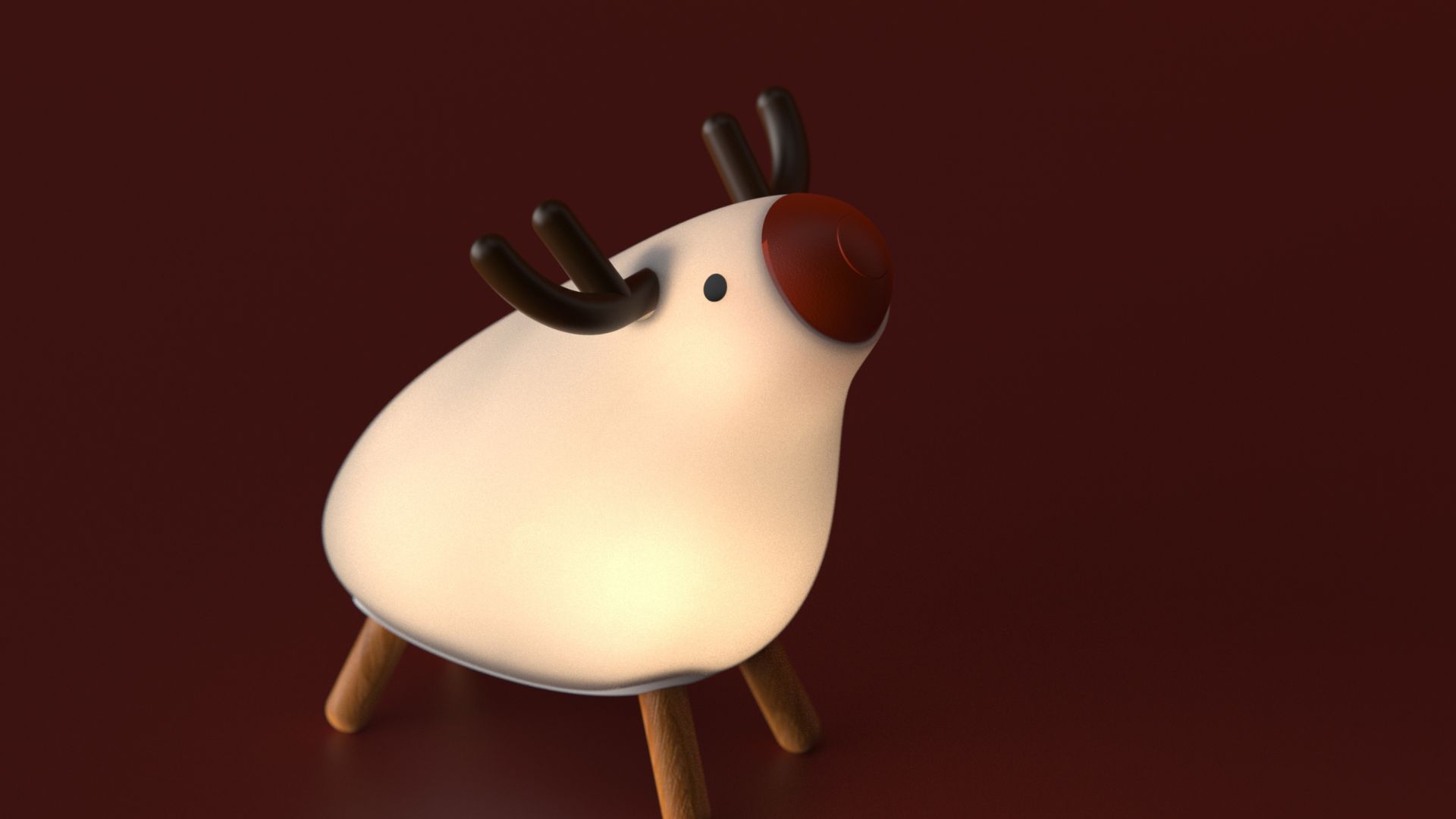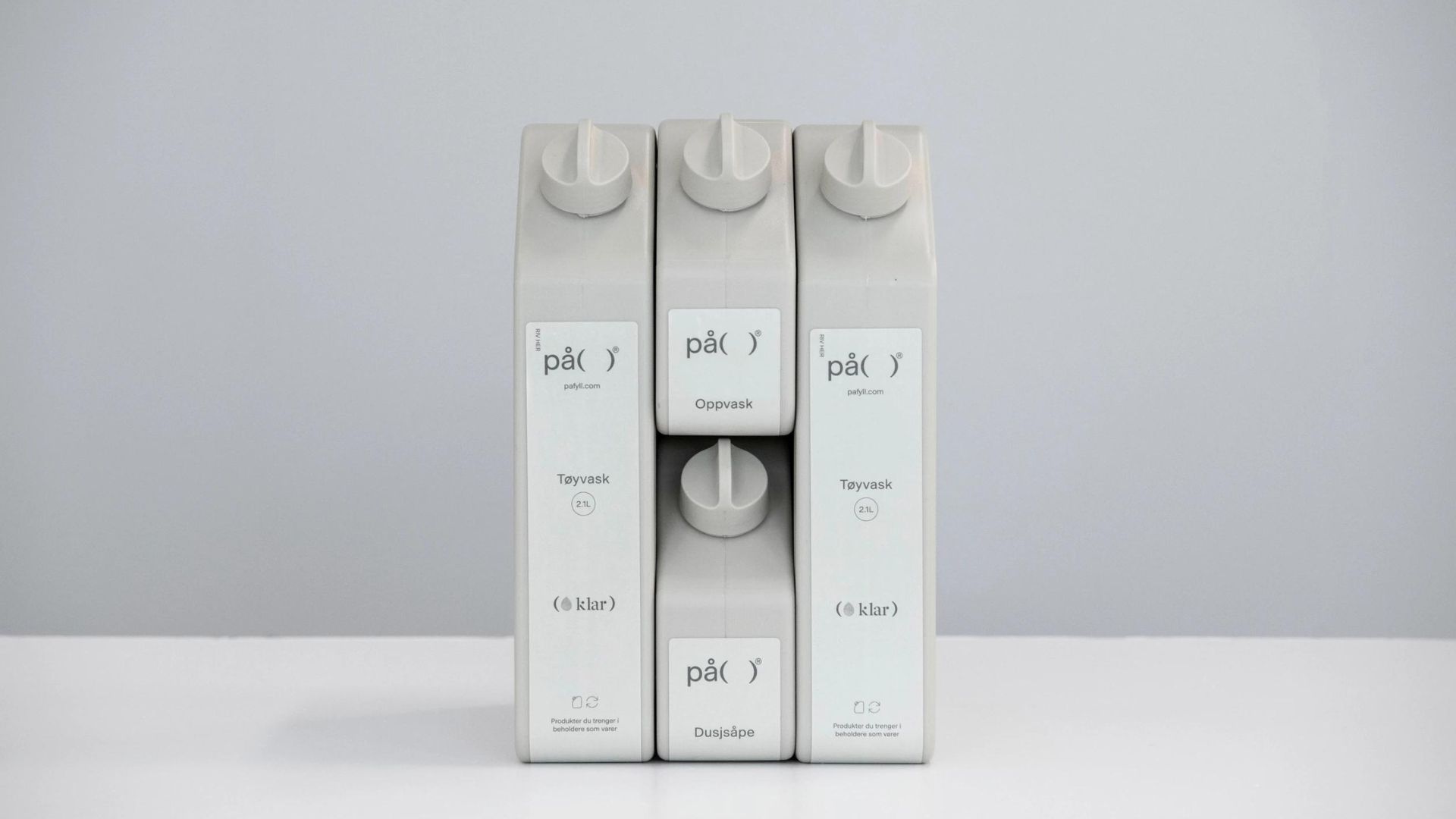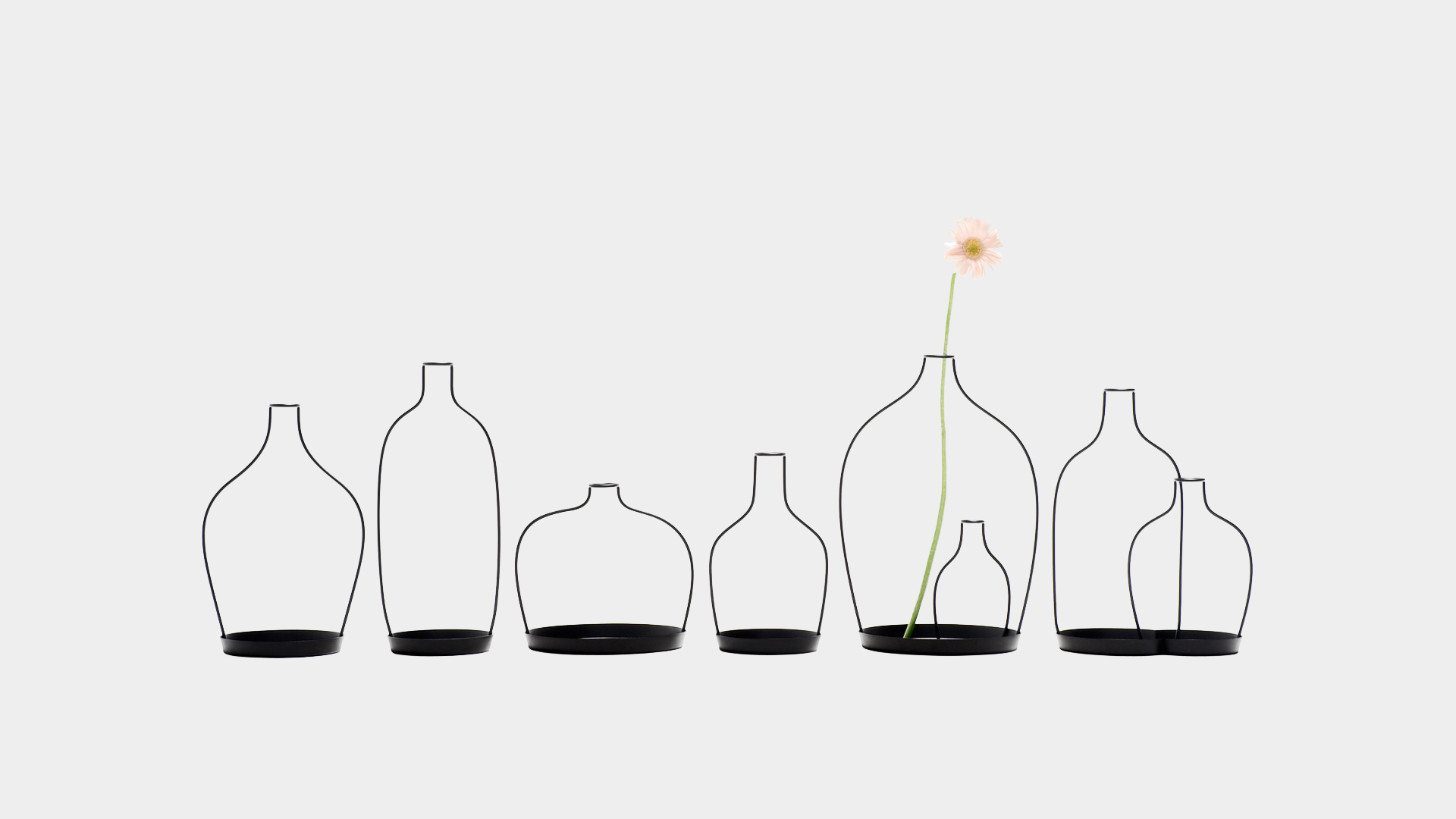Grey power and enabling design are shaping the future of furnishings
By 2050, 34% of the population will be aged over 60 in Europe alone. Life expectancy is increasing and design will need to cater for an older population that will doubtlessly have reduced or weaker functional capacity.

Design and furnishings may well represent an “aesthetic” cure – as Massimo Vignelli suggests – but they are also a “physical” one, having a positive effect on those who interact with them. In this article, we analyze 2 micro-trends: Grey power and enabling design.
The idea that the home – the place in which each one of us spends a large part of our existence – plays an active part in supporting their activities, especially in the latter stages of life, thus becomes central, given the current ageing demographic of the planet’s population.
In 2012 the Milan and Singapore-based designer duo Lanzavecchia + Wai produced a seminal piece of furniture, No Country for Old Men, conceived precisely for senior consumers, people who can no longer be described as “old” in the traditional sense of the word.

The style eschews the medical and hospital canons that usually inform furnishings for the elderly, and is contemporary and recherché and therefore interesting and potentially also attractive to younger people who may, for example, be temporarily disabled.
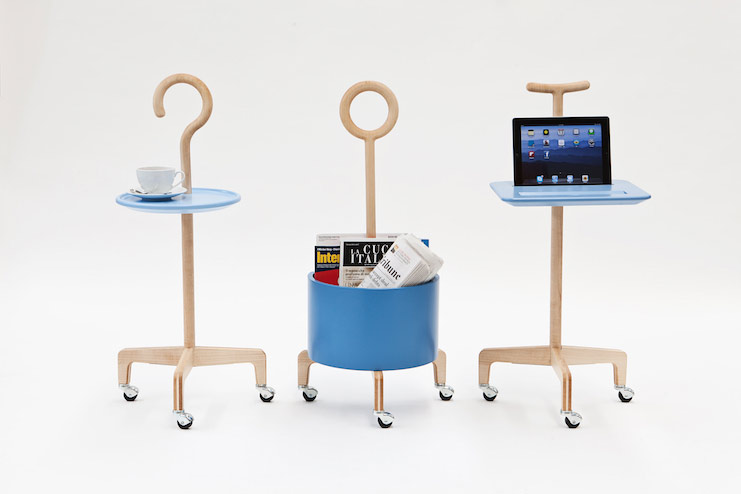
Together is a range of small, wheeled pieces of furniture with ergonomic handles, reminiscent of a stick or an umbrella, that aid domes-tic mobility and can be used as side tables, work surfaces with space for iPads or as receptacles/magazine holders.
Assunta is a seat/small arm-chair that harnesses the user’s weight as a lever to facilitate getting up.
There are big and little strategies that interior architects and designers can work on to make furniture and furnishings into an extension of the body and, in some cases, substitute for it or become devices that improve user quality of life.
Thus habitative spaces can become valid allies in carrying out everyday chores and achieving optimum psychophysical condition. Even the buildings we live in can make a useful contribution when required.
Social Complex in Alcabideche by Guedes Cruz Arquitectos
The Alcabideche Social Complex is a retirement home for the third age, designed by Portuguese Guedes Cruz Architects, which singularly fails to give off any of those “end of life” or infirmity vibes.
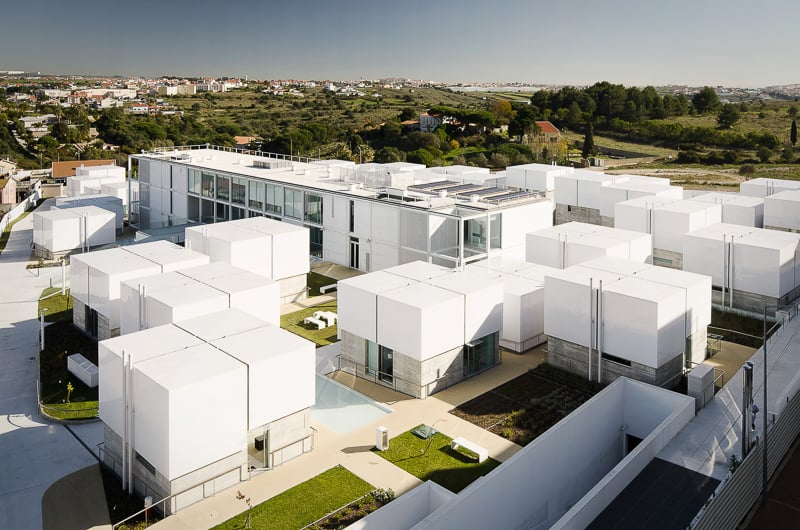
Conceived as a village made up of individual independent residences, the complex is inspired by the Mediterranean lifestyle and includes support facilities, green spaces, common terraces, swimming pools and a range of shared equipment that bolsters the concept of “active” ageing.
The homes are positioned so as to capture the sunlight, with flat translucent roofs that light up at night like lanterns.
As well as its delicate and atmospheric impact on the general aesthetic and on the landscape, this feature is also extremely practical.
In the event of an emergency or sudden illness, the occupants can switch the light emanating from the roof to red, immediately alerting the control centre and becoming instantly visible to the emergency services.
From this point of view, architecture and design acquire added “social” value by facilitating the smooth running of daily life, restoring dignity and self-respect just when people need it most.
This macro-trend breaks down into two concrete manifestations with the micro-trends Grey Power and enabling design.
1) Grey Power
By 2050, 34% of the population will be aged over 60 in Europe alone.
Life expectancy is increasing and design will need to cater for an older population that will doubtlessly have reduced or weaker functional capacity – and will therefore be in need of support – but will be no less discerning in terms of aesthetic taste.
The over 50s – the so-called baby boomers – are in fact an influential consumer group. They are free of financial and family ties and, therefore, have spending power. They do not feel as though they’re nearing the end of their lives, but are generally fit, independent and full of things they still wish to accomplish.
Moreover, after a life spent respecting the work ethic, bringing up families and sticking to the rules, they are embracing life fiercely and are keen to enter into a new chapter of great experimentation in all consumer segments.
Basically, they do not seem like and do not behave like elderly people and do not feel old in relation to the environment in which they live, in which they expect to be supported while preserving the same personalities, the same comforts and the same distinctive features that have characterised their lives.
STREET | toilet brush holder by EVER
Ever is a range of bath-room furnishing accessories designed to preempt the needs of people of all ages. Despite their simplicity, the objects designed by Monica Graffeo, Gianni Arduini and Marco Frigerio contain small and imperceptible performance enhancers that make them appropriate for different uses and suitable for the individual requirements of their users.
Looks and practicality aside, the Ever range contains added value in terms of safety and comfort.
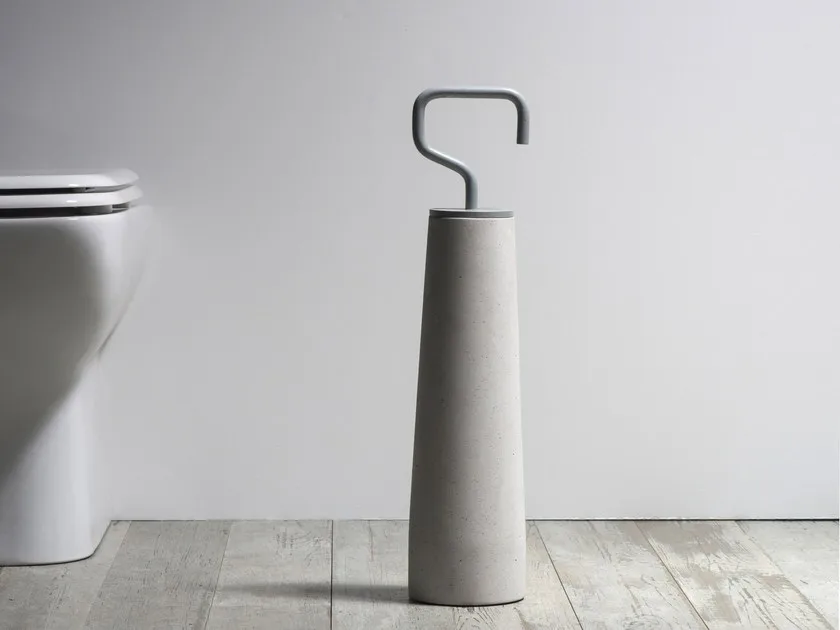
Bedside Cabinet with door by Géraldine Biard
French designer Géraldine Biard believes that the role of design is to stimulate and help people prosper in the environment that surrounds them. This belief and her own research into and observation of patients suffering from dementia in Switzerland have informed the Jardin d’Hiver accessories collection.
The range – which includes two bedside tables, a sideboard and a console table – was designed to create a constructive habitat for people suffering from this particular affliction, who are extremely sensitive to their “surroundings”.

The pieces are fitted with an integrated system that harnesses aromatherapy and light therapy to awaken all the users’ senses, alleviating anxiety and many sleep disturbances.
All the furniture in the range is made of wood, copper and Corian®, the translucence of the latter on the upper part serves to evoke a snow-topped miniature mountain landscape. The relaxing aromas emanate from the mountain peaks and the light is filtered through a graphic landscape applied to the surfaces.
The idea is that people should feel transported into a different realm – such as when they look through a window at a distant landscape – which reassures them, instilling a sense of calm and comfort. The extreme elegance of the lines also challenges and redefines the standards of medical design.
Liftware by Verily
Design and technology combined make for an effective tool in helping people suffering from debilitating illnesses to make everyday tasks, such as eating, for in-stance, more simple.
Liftware is a device – which can be used as either a spoon or a fork – that enables people suffering from chronic tremor or Parkinson’s dis-ease to feed themselves.
Developed by Californian startup Lift Labs, subsequently acquired by Google, this special utensil consists of a groundbreaking technological handle – fitted with sophisticated sensors and a micro-computer – to which the accessories, two types of spoon and a fork, can be fitted.
The handle detects the strength and direction of the tremor in the hand holding it, stabilising it in real time, so that the attached utensil shakes around 70% less.
This means that people hitherto reliant on being fed can feed themselves, generating a net improvement in quality of life.
This approach, while not strictly a cure, plays an intelligent part in alleviating the symptoms of the disease, allowing the user to enjoy meals and feel secure enough to do so in the company of others.
2) Enabling design
The “therapeutic” properties of design are not just reserved for those in greatest need, such as older people.
Planners and young designers are increasingly embracing the concept that real physical benefits can be drawn from the surrounding environment and the furnishings we use every day.
The underlying principle is that of design thinking, which puts people’s needs and their emotional and relational response to the object or product created with them in mind at the centre of the creative and design process.
Thus, aside from being a comfortable seat and an attractive design, a chair can acquire added value in terms of “learning” and of improving everyday activities, and have a direct impact on the user’s physical wellbeing.
When planned with these criteria in mind, and equipped with objects that embody these characteristics, the habitative space can be much more than a comfortable environment, becoming a functional instrument that works to maintain the physical wellbeing of those who live in it.
Momentum and Purificatum by Fabian Zeijler
Fabian Zeijler is a designer, trained at the Design Academy in Eindhoven, whose formally sophisticated and minimalist work focuses on balancing three factors: practicality, comfort and looks.
Underpinning these factors is the concept that, as well as serving a particular purpose and embodying particular expressive values, furniture and furnishings should also be seen as vehicles for and “dispensers” of wellbeing.

Take Purificatum, an air purifier that doubles as a lamp.
It comes in both a floor and a tabletop version, and can be sited wherever it is most useful – next to a sofa, on a desk or in a bedroom – to improve air quality in the home, making a positive impact on the health of its inhabitants.
Purificatum, which is both simple yet elegant, is also a stylish lamp, projecting light ranging from the cooler tones, promoting concentration and productivity, to the warmer ones, which promote rest and relaxation.
The Dutch designer’s approach puts the accent on the emotional relationship that builds up between people and the environment in which they live and spend a good deal of their time.
Zami Stool by Zami
Zami is a smart stool inspired by a simple observation: people are spending more and more time sitting down and poor posture can eventually lead to neck and back problems, with significant repercussions on our general health.
This special stool was designed to promote “active” sitting, which helps to maintain the optimum curve of the spine.

Basically in order to balance on it, the stool “requires” the abdominal muscles to come into play, thereby training them to sup-port the back properly.
The seat also harnesses technology, with a special app that monitors the user’s “performance”, providing feedback on their postural habits so that they can be improved day by day.
Zami’s design is the fruit of careful ergonomic research and, unlike similar products, which often sacrifice looks in the name of practicality, is unusually stylish, catering to contemporary taste, both because of its simple, attractive lines and the fact that it is craftsman-made from top quality materials.
Cosy Carpet by Studio Unitt
Furnishing accessories such as curtains, cushions, rugs and coverings help to make a home warm and comfortable, and play an important part in improving its acoustics and in regulating humidity levels.
They can also become the enemies of those plagued with asthma and allergies to dust and mites.
This is what informed Siem-Pabom Studio’s Cosy Carpet, a rug that can be heated up to a temperature of 60° C, thereby cutting the number of allergens in the air.
The round rug is made of coils of rope, culminating in a hydraulic connection.
Once connected to a radiator, for example, or to another heat source, every two months, hot water starts to circulate through the inner covered tubes, sparking the air purifying process.
Simultaneously, the rug also works as an environmentally friendly floor heating system.
Cosy Carpet comes in two different colourways – blue and green – and as well as its appealing looks and colourful impact, allows those most sensitive the freedom to surround themselves with textiles and finishes that would otherwise be ban-ished from their homes.
The Megatrend Map
Enabling House is the megatrend explored by LivingScapes, the study carried out by the Salone del Mobile.Milano Trend Lab – the new research laboratory and intelligence centre of the Salone del Mobile.Milano – to pick up on the leading trends evidenced at international level in the world of design, furnishing and home living.
The Salone del Mobile Trend Lab employs an ethnographic and field based research methodology, combining onsite (a network of researchers/international anthropologists), desk and web sources, to monitor the socio-cultural changes and evolutions taking place and the way in which these translate and take shape, and are evidenced in the domestic space.
It also employs a panel of Opinion Leaders, both national and international, selected ad hoc for their knowledge of the research subjects (design, architecture, interior design, interior architecture) and for their ability to take a crosscutting look at the themes of design and creativity.
The scope of observation includes all the leading international markets (Europe, Russia, USA and Asia) with a focus on “developing” countries such as China.




